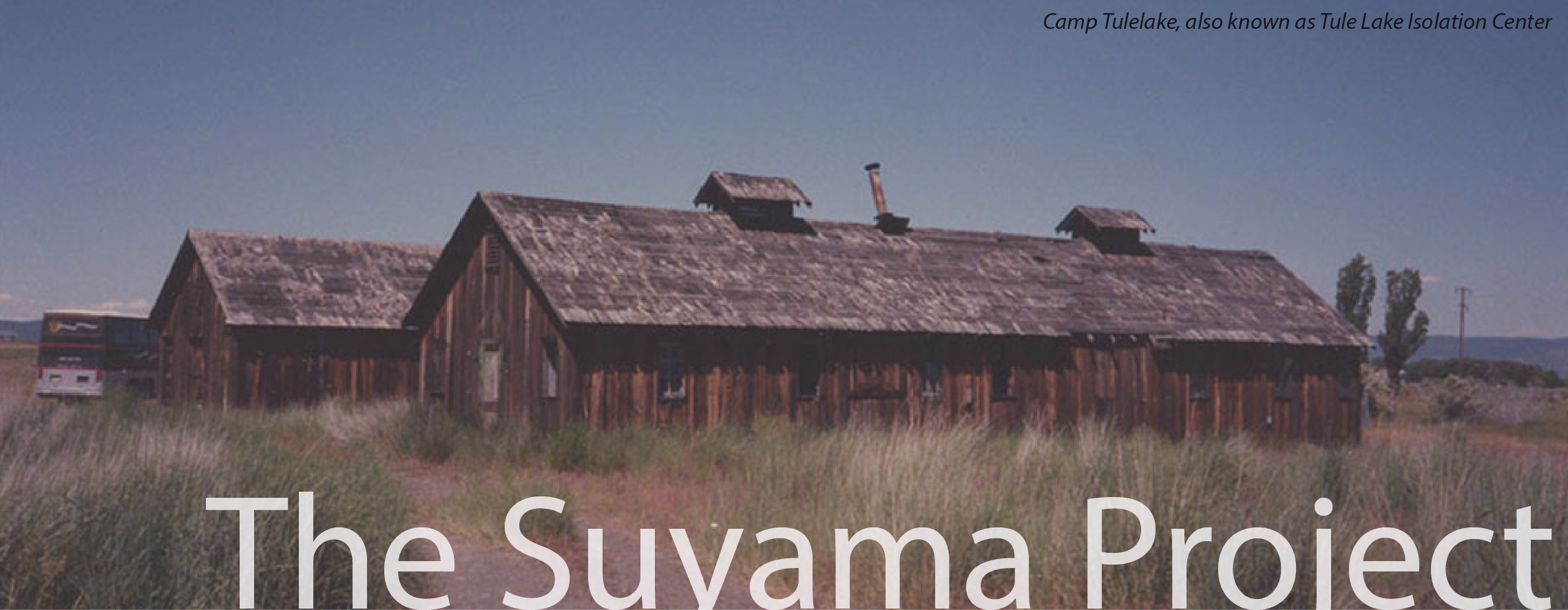
|
UCLA Asian American Studies Center's Suyama Project aims to preserve the history of Japanese American resistance during World War II, including, but not limited to the 100th/442nd Regimental Combat Team draftees, Army and draft resisters, No-Nos, renunciants, and other Nikkei dissidents of World War II. The Suyama Project is made possible through the generous gift of an anonymous donor who wanted to honor and remember the legacy of resistance, broadly understood. |
| Category Archives: Moab/Leupp Citizen Isolation Center at Moab, Utah
Citizen Isolation Center at Moab, Utah
Leupp Citizen Isolation Center (Various Buildings)
Leupp Citizen Isolation Center (Various Buildings)
Leupp Citizen Isolation Center Dining Hall
Leupp Citizen Isolation Center Dining Hall
Leupp Trading Post
Leupp Trading Post
Harry Ueno Pond
Harry Ueno Pond
The National Park Service is in the process of restoring a pond which Harry Ueno constructed during his brief stay at Manzanar before being shipped off to the Moab and Leupp Citizen Isolation Centers and eventually to the Tule Lake Segregation Center.
Moab and Leupp Citizen Isolation Center On Dec. 10, 1942, the United States government established a heavily guarded citizen isolation center at a former Civilian Conservation Corps camp in Moab, Utah, to imprison U.S. citizens of Japanese descent deemed as troublemakers from the 10 War Relocation Authority (WRA) camps. The government moved the prisoners to a former boarding school on the Navajo reservation in Leupp, Ariz., as the Moab prison population expanded. The Leupp Citizen Isolation Center opened on April 27, 1943 with 150 soldiers guarding 80 citizens.
Moab and Leupp Citizen Isolation Center The alleged crimes of the men varied from upsetting the WRA camp administrators to participating in protests to arbitrary and uncorroborated accusations made by informants. Some were mistaken identity mix-ups where someone with a similar sounding name was picked up.
These men often received no hearings where they could counter any charges leveled against them and were given indefinite prison terms.
The citizen isolation center was quietly shut down on Dec 2, 1943, after Leupp Director Paul G. Robertson traveled to Washington D.C. and reported abuses documented by Francis S. Frederick, chief of internal security at Moab and Leupp.
The government had planned to close down Leupp in October 1943 and transfer the prisoners to the Tule Lake Segregation Center, but due to the unrest at Tule Lake, the government delayed the shutdown until December.
Once transferred to Tule Lake, most of the prisoners were placed into the Tule Lake stockade before being released into the general Tule Lake population.
For more information: Drinnon, Richard. Keeper of Concentration Camps: Dillon S. Myer and American Racism. Berkeley: University of California Press, 1987.
Weglyn, Michi. Years of Infamy: The Untold Story of America's Concentration Camps. New York: Morrow, 1976. Updated ed. Seattle: University of Washington Press, 1997.
|
|||||||||||||||||||||||||||||||||||||||||||||||||||||||||||||||||||||||||||||||||||||||||||||||||||||